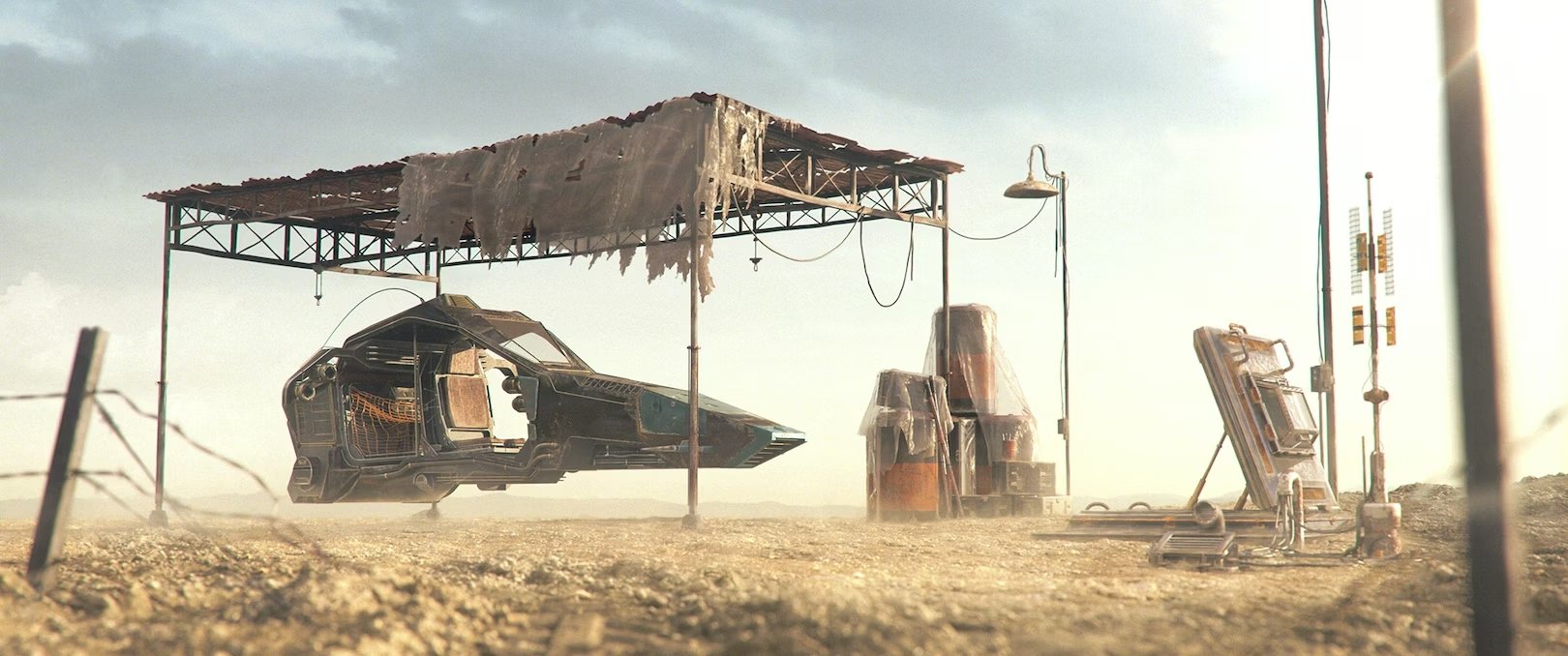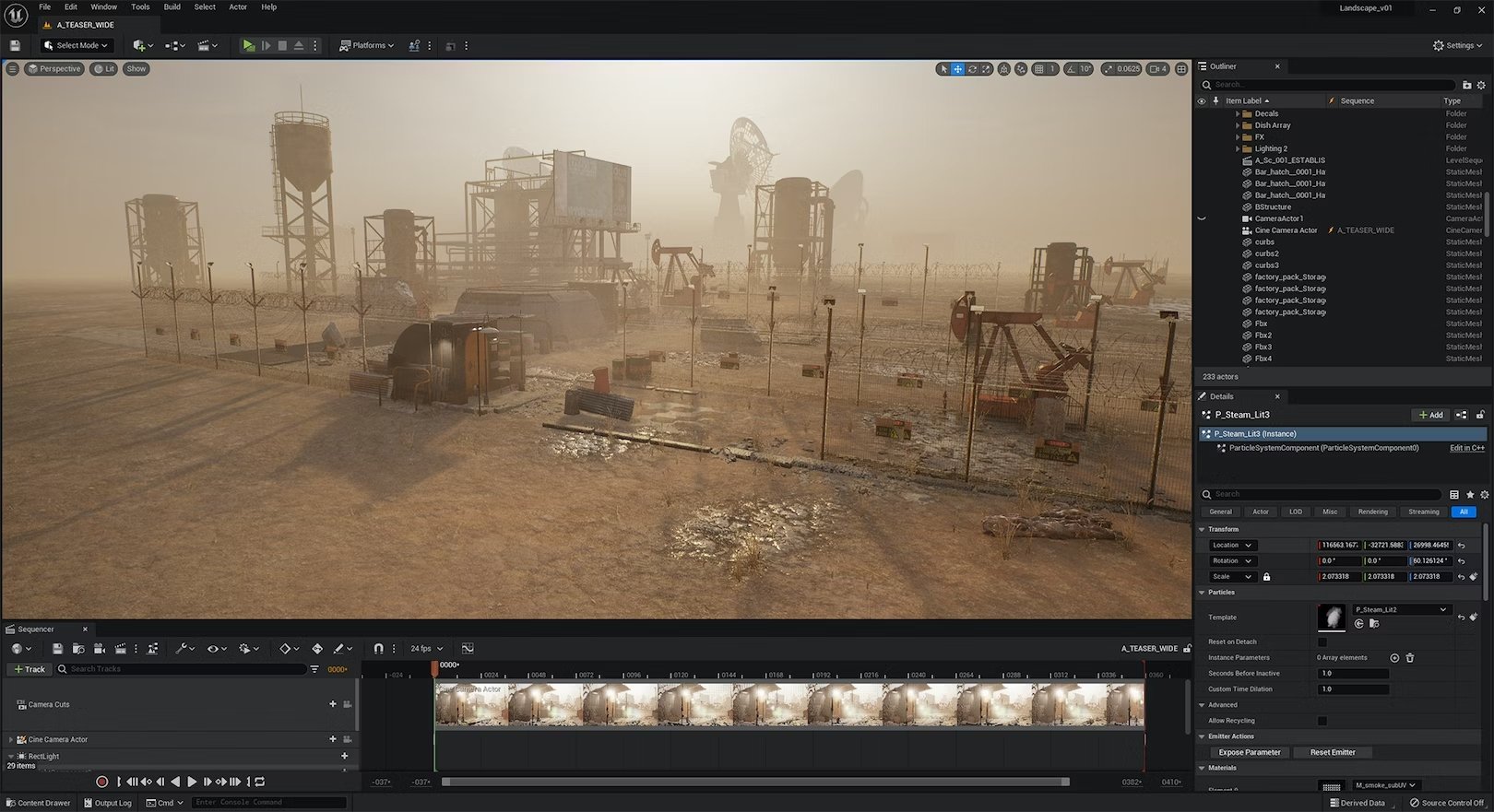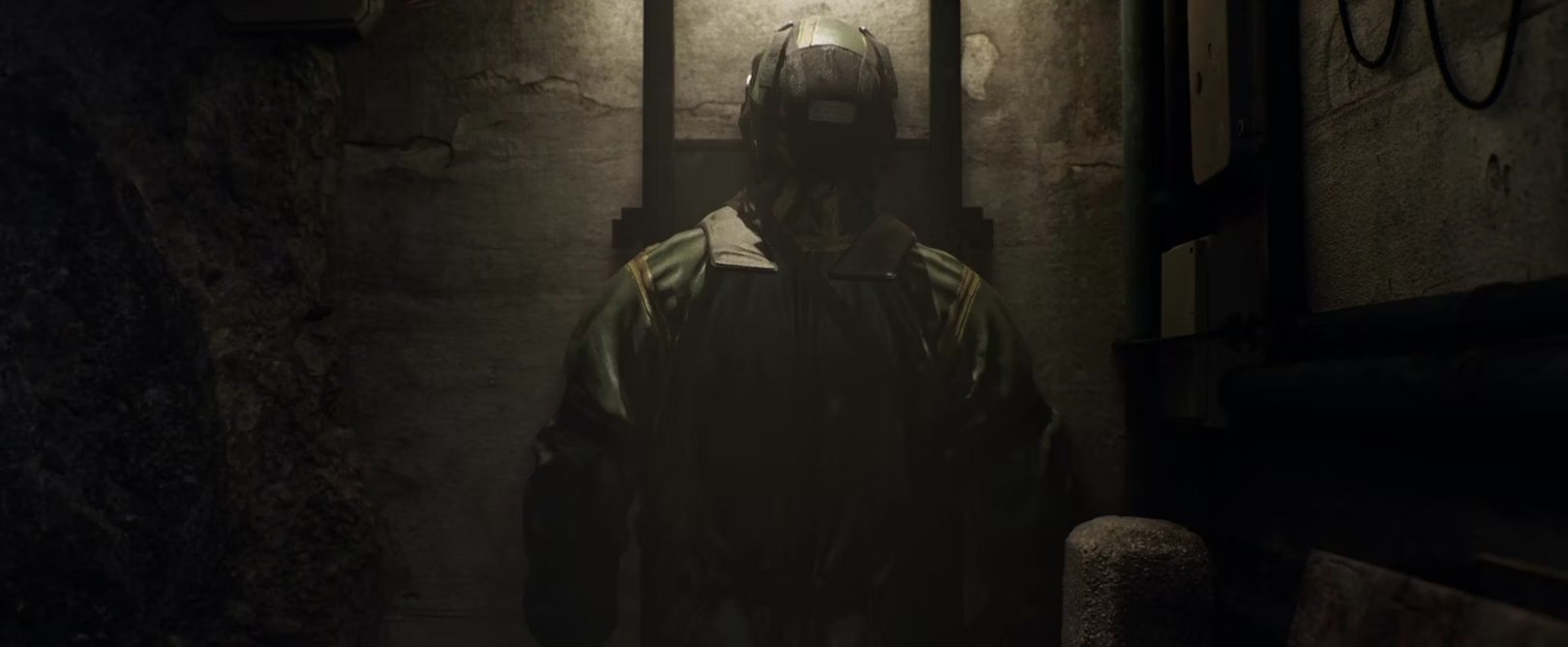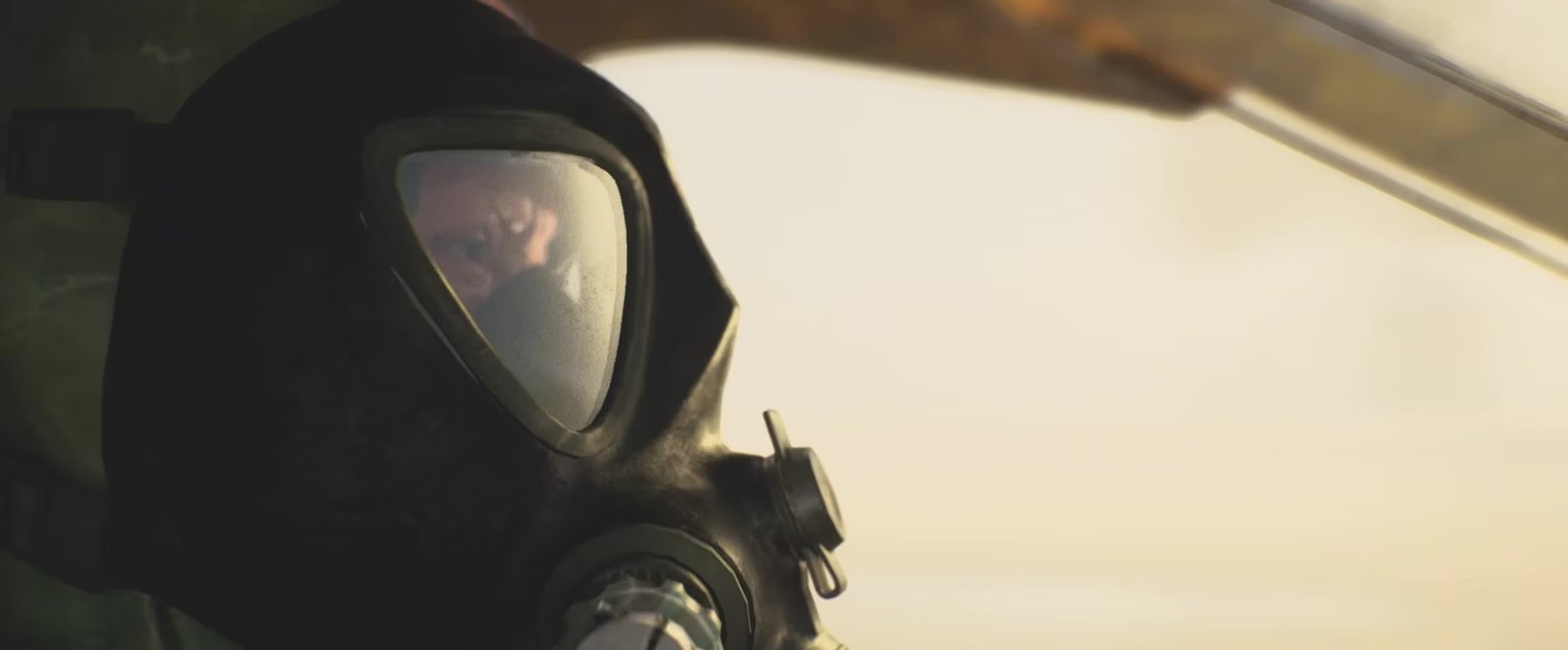Creating a Post-Apocalyptic World with Maxon One and Unreal Engine
Andy Lefton’s short film “World Suicide” tells a story, showcases stunning environments and demonstrates perfectly executed world building techniques all in the span of three minutes.
The Minneapolis, Minnesota-based storyteller with over 20 years of experience in the world of 3D, decided to create the film as a platform for learning Unreal Engine and exploring its integration with Cinema 4D.
Red Giant tools and a powerful audio track round out the gritty, lived-in world seen in the film. We spoke with Lefton about where inspiration for the film came from, how he approaches building an entire 3D world and what's next for him.
Tell us a little bit about your 3D journey?

immediately latched on to it and it’s been an amazing outlet for my creativity ever since.
How do you balance client work with personal projects like this?
Lefton: Anyone who knows the ins and outs of a 3D pipeline is probably familiar with how fast paced the industry can be. You need to keep up with the changes and trends of ever-evolving software, technology and processes in order to stay relevant.

I work with a brilliant team at MadMicrobe and our remote morning dailies get us all on track with what the day will consist of. We have quite a bit going on every day, but thankfully we’ve got some excellent project managers, directors and producers to keep everything in line.
Once I roll up to my desk and put my nose to the grindstone, I am aware that I need to really focus. There is always something to learn within the industry, so I prepare myself every day to try to pick up something new or gain new knowledge.


How long did “World Suicide” take to complete?
Lefton: It was approximately a year and a half, keeping in mind that many months of this was learning Unreal and only working on weekends and off hours. I thought the film was in a good spot, but had a hard time letting it go as I felt I had a million other things I wanted to accomplish with the story, the layout and other elements. But I knew I had to move on as time was short and I needed to get back to other things in life.

Once the concept began to take shape, I decided to move everything into Unreal. I also added Quixel Megascans to my scenes to help block out the shots and that took everything to a whole new level!
Rounding out the dystopian mood of the film were the various hybrid analog/digital screens and readouts. Red Giant tools played a big role in getting the specific look I wanted with the HUD elements, in particular the Universe tools were a perfect fit in getting the look just right.

What did you look to for inspiration or reference?
Lefton: Music was probably the biggest influence in setting the mood. My friend Themis wrote the track “Area Two” via his project Metatag and had sent it to me a few years ago. Listening to it helped spawn the original idea behind “World Suicide.”
And there were definitely other influences on the overall atmosphere and tone of the project. Films such as “The Road,” “Terminator: Salvation” and “Mad Max” gave me ideas for some directions I wanted to go. I used a lot of reference images for the bunker for example, which was a constant work in progress. I wanted it to feel lived in, but not post-apocalyptic. It was more of an underground workshop for this ill-fated lone worker, away from the harsh outdoor elements brought on by humans.


How do you begin a new personal project?
Lefton: Music and the idea that something visual can come from it will usually trigger ideas for me. My creative process probably stems from the decades of punk rock I’ve subjected myself to. I tend to see the world as a concept and that there may be a better place for us all, no matter how grim the circumstance.
From there, concept art is my first go-to as the idea starts to form. Like any other production artist, I will move into the storyboard phase where I’ll begin to assemble these concepts into a timeline. I tend to jump right into blocking out my ideas in Cinema 4D to help get a sense of how the story will flow. Sometimes storyboards will be drawn, sometimes I’ll use 3D boards. Regardless, 3D previsualization is key before committing to a solid story.

Were there any speed bumps along the way?
Lefton: Plenty! Nothing I couldn’t overcome, but that’s just the nature of production work, especially getting my first taste of Unreal. There was a lot of trial and error with the workflow, and using the Datasmith plugin to bring Cinema 4D assets in to Unreal was an absolute lifesaver. I wouldn’t have been able to complete the film without it.
I used Substance Painter for a lot of the shader work on the vehicle and other assets. Having the ability use Substance textures in Cinema 4D standard materials, and then importing them into Unreal was really helpful.

How long did “World Suicide” take to complete?
Lefton: It was approximately a year and a half, keeping in mind that many months of this was learning Unreal and only working on weekends and off hours. I thought the film was in a good spot, but had a hard time letting it go as I felt I had a million other things I wanted to accomplish with the story, the layout and other elements. But I knew I had to move on as time was short and I needed to get back to other things in life.

Where do you see this project headed? Will there be a Part Two?
Lefton: My initial goal with the film was to challenge myself to integrate Cinema 4D into an Unreal pipeline, and I couldn’t be happier with the results. As for this project, the story stems from angst over these last few years of instability and uncertainty in the world.
A part two would simply be a resolution to the current madness we’re all experiencing. The idea to have another installment is tempting, but for now I’ll take a breather and focus on other creative pursuits in my life.
